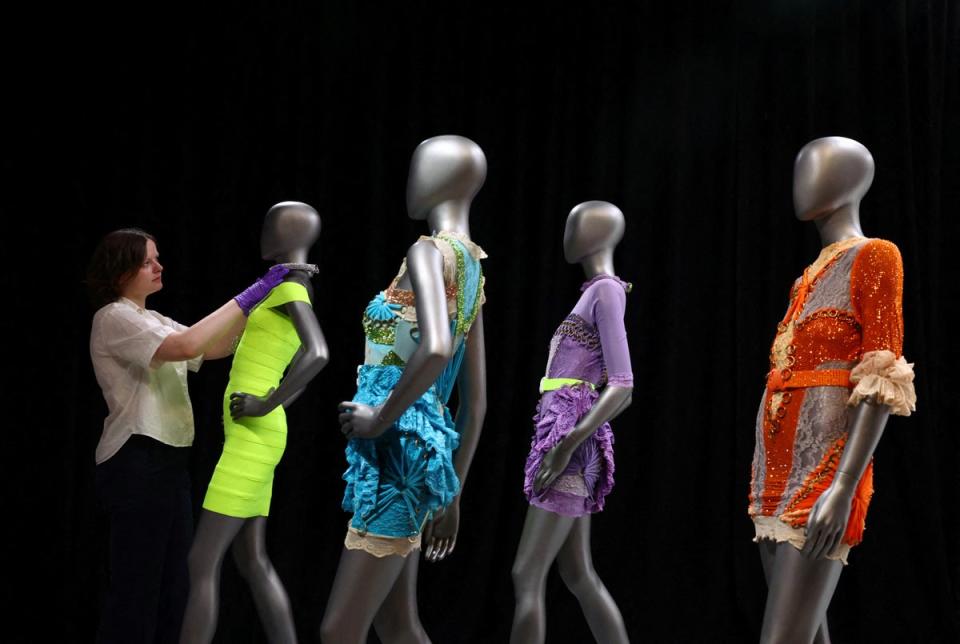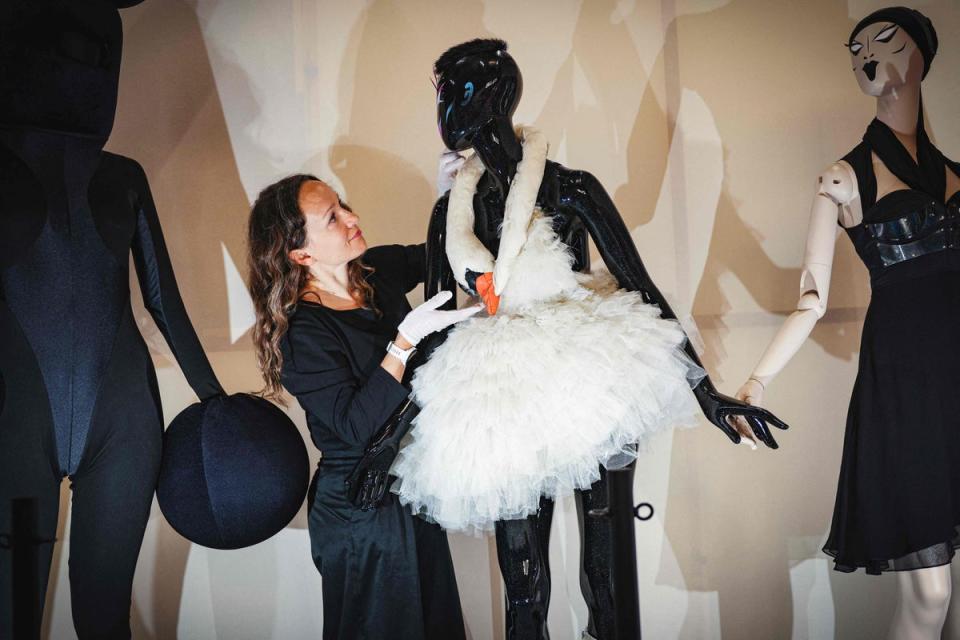REBEL: 30 Years of London Fashion review – a show that will galvanize the next generation of fashion talent
London’s legendary art and fashion colleges are powerful assets. And a new exhibition at the Design Museum in Kensington painstakingly pays tribute to this, collating over 100 designs by UK-based fashion designers.
REBEL: 30 Years of London Fashion is specifically concerned with the cohort of 300 designers who have been supported by the British Fashion Council’s NEWGEN scheme, which offers financial support and mentoring to upcoming designers at the embryonic stages of their careers.
It makes this show a great equaliser: no matter if these designers went on to become household names or their businesses folded, every look on display was made when they were 20-something-wide-eyed-creatives receiving NEWGEN support. For this reason, it is an explosion of freedom and creativity that is as infectious as it is inspiring.
A riot of saturated colour and wacky textured gowns by the likes of Richard Quinn, Mary Kataranzou and Feben greet visitors – a testament to the artistic reaction to tough times – and continues to a circular room dedicated to Alexander McQueen. He was part of NEWGEN’s first batch of recipients, when it was founded in 1993 to save the quickly deteriorating London fashion scene in the face of a British recession.
From this point forth comes an eccentric and unapologetic romp through the sectors of London life to answer a simple question: why does this city continue to produce some of the world’s most pioneering designers?
There is ‘Art School’; a section that credits the tutors from institutions including Central Saint Martins, Westminster, London College of Fashion and the Royal College of Art. Mannequins here model viral designs that have launched students into the public eye – from SS Daley’s blue and white printed flared trousers worn by Harry Styles in his Golden music video, to the bubblegum blue, tulle froth dress by Molly Goddard, which was worn by Rihanna. And the walls are peppered with quotes which reflect a naive insatiability, key to college life: “Imagine we could be the ones to change it all,” reads one by Paolo Carzana.

Then comes the ‘Club Scene’, with the wackiest creations queuing up for a rave. Hair and makeup for the music-related designs has been curated by NEWGEN alumni, CSM tutor and master collaborator Nasir Mazhar. Gareth Pugh’s giant, black cartoon-esque poodle suit stands beside Marjan Pejoki’s infamous swan dress (yes, the original Björk one) and nearby is the latex balloon outfit by Harri, worn by Sam Smith to The Brits this year. They could all be waiting for a spot inside the notorious LOVERBOY Dalston club night, which was a staple of art school nightlife run by Charles Jeffrey to fund his CSM MA in the mid-2010s. Rightly, then, Jeffrey’s Elizabeth I-meets-Dali-lobster ball gown holds court.
The runway set-up for start-up fashion houses is dissected, first with a backstage area spotlighting accessories designers – jewellers, shoemakers, and handbag designers – as well as hair and make-up artists, before the main event: a full-sized iron catwalk, which sees five of the most influential catwalk shows by London-based designers spotlighted.
This includes the sophisticated tailoring and pearl embellishments of Grace Wales Bonner, one of the first designers to make her British-Jamaican heritage a focal point of her collections, not something to shy from. Many designers have since followed suit. There are also JW Anderson’s frilled shorts for men from 2013, which caused scandal in the press, but secured him the top job at the Spanish leather goods behemoth Loewe shortly afterwards, and looks from Christopher Kane, Craig Green and Meadham Kirchhoff.

What this exhibition succeeds in is connecting the dots between these radically individual designers. All are cut from very different cloths, but there is a comparable mindset of the positive (relentless, even) pushing of the boundaries. This is consolidated by the concluding section, ‘Change-Makers’; a row of women-for-women designers (which remain a head-scratching rarity globally) backs onto the environmentally progressive. Chris Raeburn has been upcycling his collections as early as 2010, while Leo Carlton, a current NEWGEN recipient, has carried the baton forth, showing exceptional, 3D printed headwear and accessories using the plant starch they grow themselves.
The exhibition does not tackle the struggle many of these designers can face when the funding dries up – but that is not its intention. In a period categorised by the cost of living crisis and arts funding cuts, REBEL looks to prove the wealth and invention unbridled creativity can offer to the city and the UK.
As co-curator Sarah Mower, BFC ambassador for emerging talent and critic for US Vogue, says: “The best outcome is that young people come, and be inspired. Talent isn’t distributed by parental income, and NEWGEN was set up to support promising designers on the basis of talent and financial need.” And the thought one is left with is: the longer that continues, the better for us all.”
Design Museum, from September 16 to February 11, 2024; designmuseum.org


